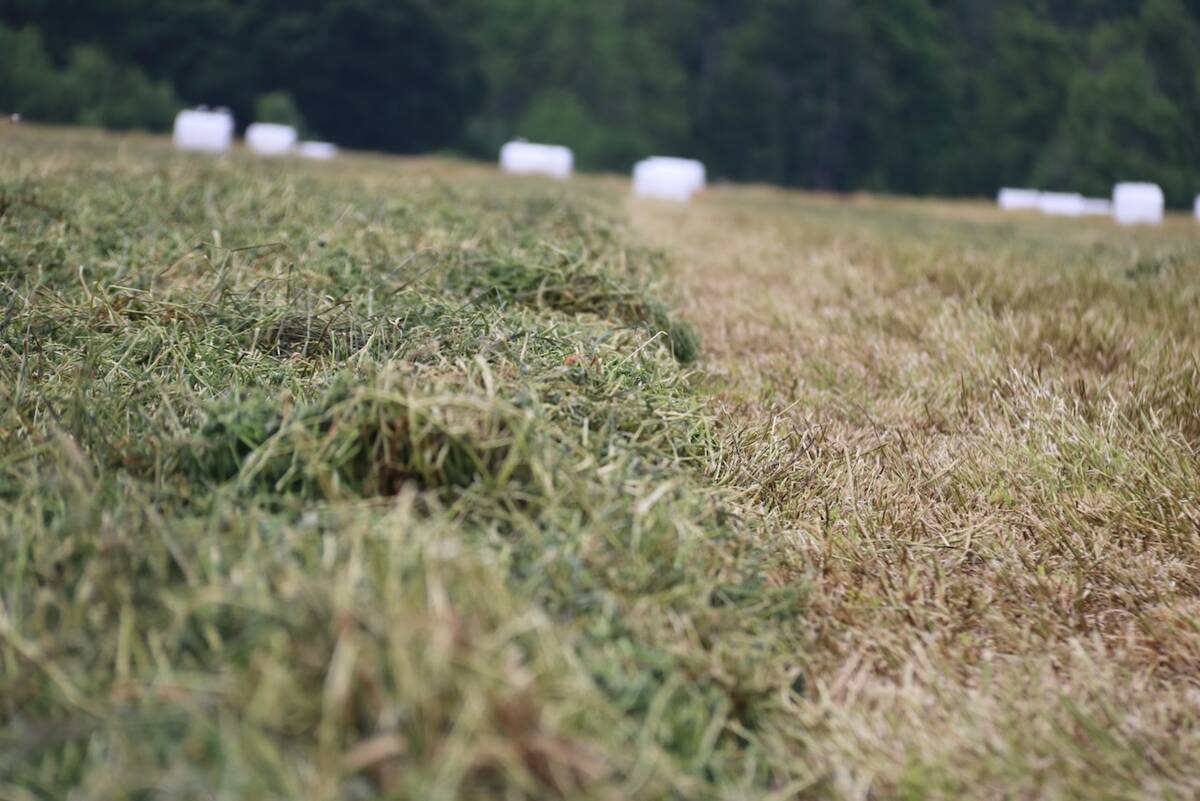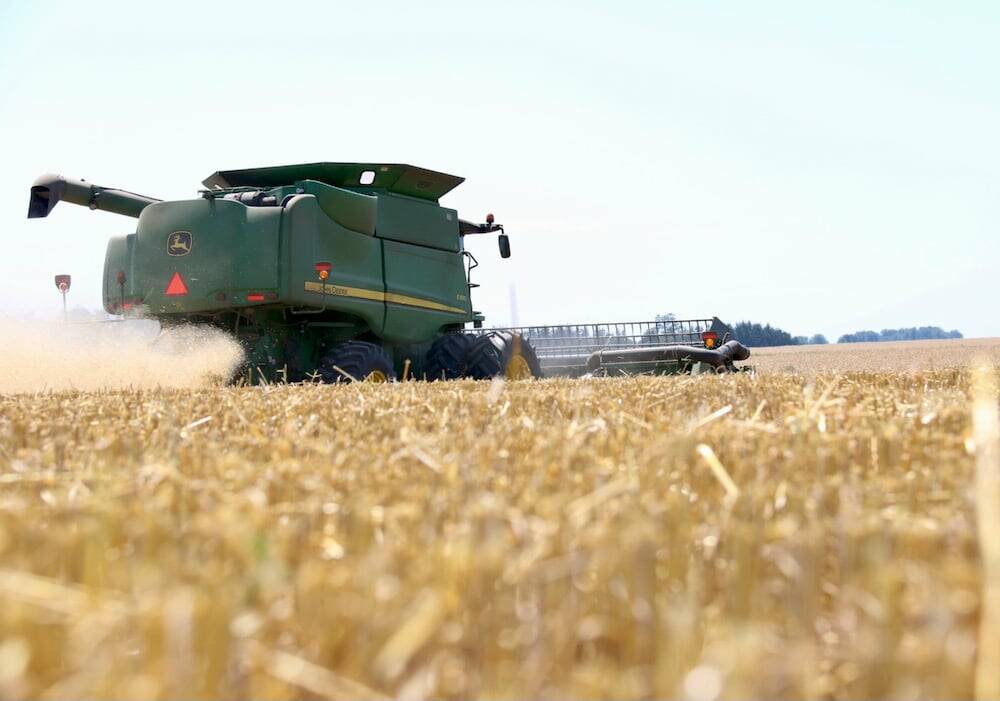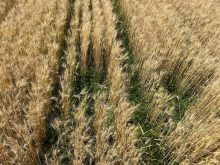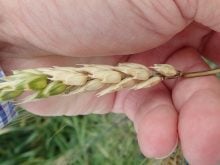Glacier FarmMedia — The wheat is all long in the bin in Western Canada.
But while most producers could tell you their yields for 2024, one U.S.-based grain expert is calling for more attention on what he says are the four core components that went into creating those yields.
Phil Needham, owner of Needham Ag Technologies in Kentucky, says that list includes the number of heads per square metre; number of spikelets per head; number of grains per spikelet; and weight.
Read Also

New high-performance forage training program to launch in 2026
A new Canadian Forage and Grasslands Asssociation high-performance forage program will be a resource for farmers, agronomists and others in the forage sector.
“From a point of view of yield potential and increasing yields, it’s really important to understand where the components of yields are,” Needham said at a Saskatchewan Agronomy Research Update in December.
Those components are part of a bigger yield management picture, he says.
“For high yield and good-quality wheat, we look for high-yielding wheat with consistent head populations per metre of row and per square metre (within the ideal range) across the seeder width and across the field,” he says.
“This is sometimes linked to soil types and soil moisture, but many times we find variability is closely linked to differences in seeding depth or, especially, poor spreading of residue during harvest of the previous crop.”
Looking for the Goldilocks zone
The number of heads per square metre, square yard or square foot — depending on the grower’s preference — is key, Needham says, adding that head counts are best done between grain fill and harvest.
You don’t want too many or too few heads. Too many heads at harvest can create lodging and, along with it, lower yields. Insufficient heads for the moisture available can also reduce yield, he says.
A post-emergence nitrogen application can help in the latter case, “especially in higher rainfall years, so we can better determine the yield potential and feed it with mobile nutrients like N and sulphur.”
Dryland wheat growers in southern Saskatchewan, southern Alberta and, possibly, western Manitoba should shoot for 500-600 heads per square metre, the U.S. expert advised.
Producers growing wheat under irrigation should aim for 700, Needham says.
To calculate that number, “all we do is we count the number of heads in a yard of row and then multiply it by the number of rows in a metre or yard of row to come up with the number of heads on average.”
“For example, on 10-inch spacing (25 cm), if you divide one metre by 0.25 metre, you get four. If you have 150 heads per metre of row on average, you have 600 heads per square metre.”
Plant uniformity in the row is also a key factor to review, he says, emphasizing the need for stand counts.
“Lots of people fall over at the starting gate by not getting a uniform plant population. For example, some rows might have 70 plants per metre and the next one has 140 per square metre.
“So taking stand counts helps growers determine how good of a job their seeder does. Be aware that spreading residue evenly at harvest also has a big impact on plant population and uniformity of emergence.”
Spikelets per head, grains per spikelet
Measuring the number of spikelets per head is critical, he notes, along with counting the number of grains per spikelet.
Wheat heads in Western Canada average two to three grains per spikelet on dryland conditions and three to four under irrigation.
Sufficient fertility and moisture, particularly at critical developmental stages, will boost both of those metrics, translating to better yield, he later wrote via email.
Bring out the scale
The weight of each grain, test weight or 1,000 kernel weight (TKW) — depending on how a grower chooses to quantify it — is the fourth component of yield.
Test weight can be determined on-farm with a test weight scale. TKW is usually calculated in a lab, but if farmers have an accurate scale, they can count grains and weigh them to determine this number, Needham says.
Group effort
To highlight how components work together, Needham offers an example of a hypothetical farmer. That farmer seeds 25 seeds per foot of row on 10-inch spacing, equating to 225 seeds per square metre planted.
“If the germ is good, you’d expect somewhere in the region of 85 per cent emergence, hopefully, maybe 90 per cent, but roughly 85 to 90 per cent emergence. So you should have somewhere in the region of 191 emerged plants per square metre,” he says.
“With good soil moisture and adequate early nitrogen availability, we can assume every plant has a main stem and three tillers for a total of four heads per plant, measured at stage 31 (the jointing stage). You’ll generally drop a stem, but you’ll probably end up with somewhere around three heads per plant, which is a main stem and two tillers at the heading stage, which gives you around 573 heads per square metre at heading stage.”
To translate that into bushels of wheat, assuming 30 grains per head on average and a TKW of 40, the farmer would get 0.69 kg per square metre of grain, he says, giving the grower around 102.37 bushels per acre.
“It may be a fraction less than that with your wheel tracks through the field that you use putting on your fusarium head blight fungicide,” he says.
Record keeping key
It makes the case for consistent record-keeping to see where components of a given yield “came from,” Needham says.
“You can use a spreadsheet to compare fields that you work with to ideal ranges and try and see where your yield was assembled, or what components of yield came from what element.”
That data can, in turn, help farmers make crop management decisions.
“If you want to change your grains per head to 35, for example, it takes (yield) from 103 to 119 bpa. If you drop the grains per head down to 25, it drops into 85 (bpa). It’s just a simple example, but you can see where your yield comes from.”
Joining the Yield Enhancement Network (YEN) can help producers crunch these kind of numbers, Needham says. According to Agriculture and Agri-Food Canada, the YEN model helps researchers and farmers work more closely together in pursuit of higher yields by efficiently using the resources they have.
The central feature of the YEN is a benchmarking program that compares virtually every element that went into the production of a wheat crop to those of surrounding growers.
The metrics include soil type, fertility, stand counts, number of days between specific growth stages, rainfall, temperatures, sunlight hours, number of grains per head, head count, soil test values, early tissue test values, late tissue test values and “inputs in general.”
“You’re going to be seeing more of YEN, and it’s gradually expanding as we learn and enter more information,” says Needham, who serves on the YEN North America leadership group.
“I’m not saying it’s perfect yet, but it is expanding and we’re able to enter more data that we think is correct over time.”
















